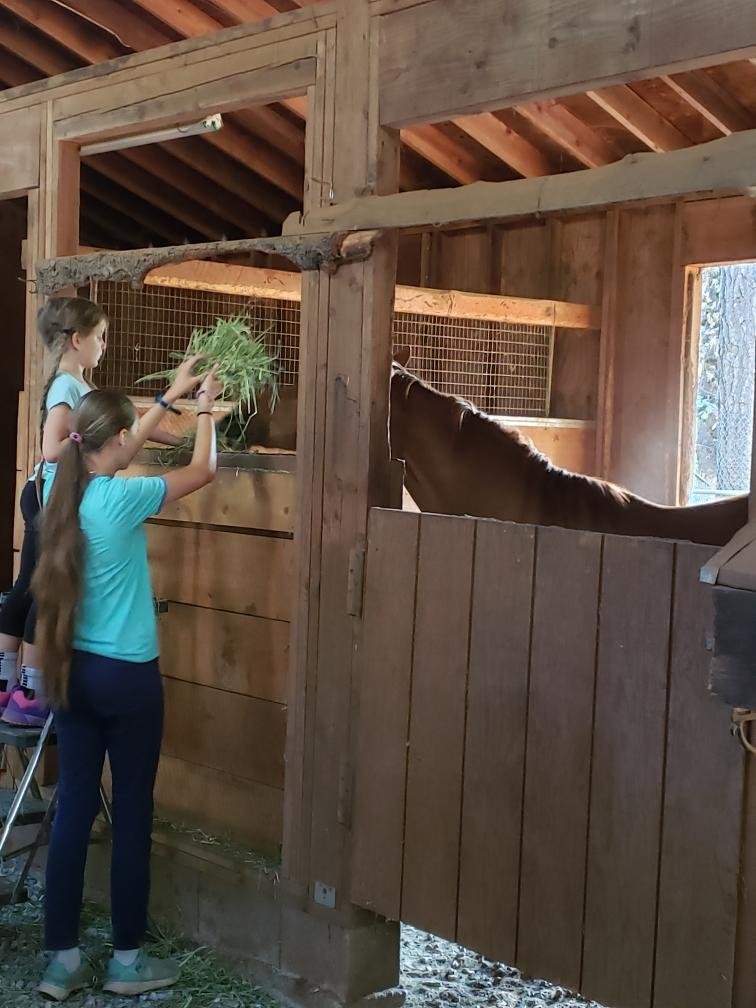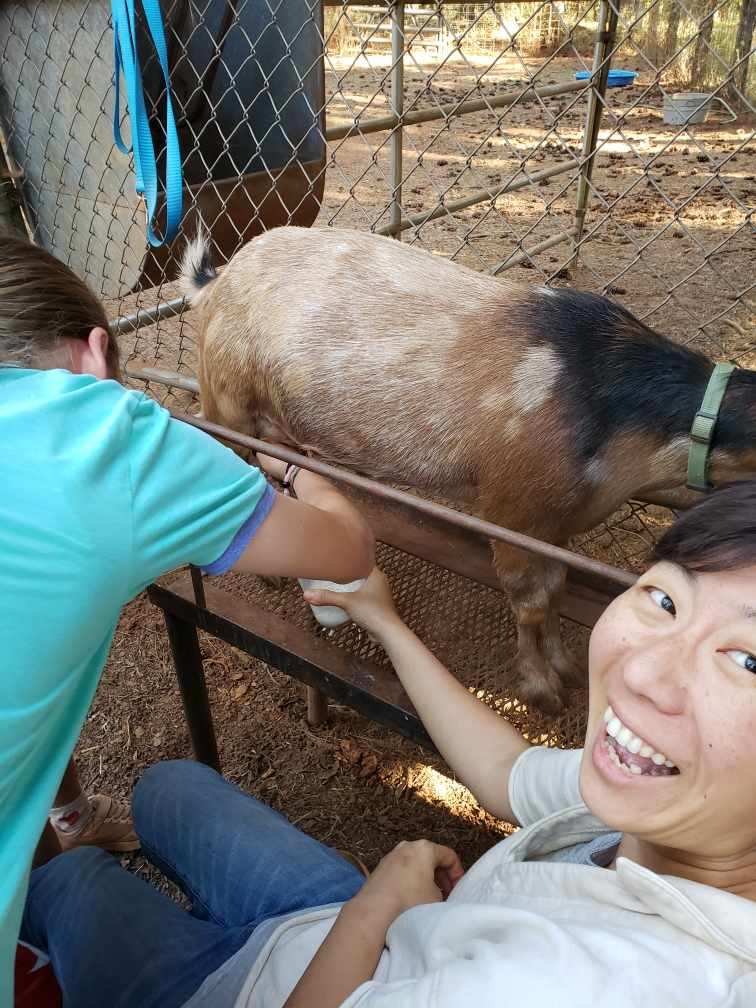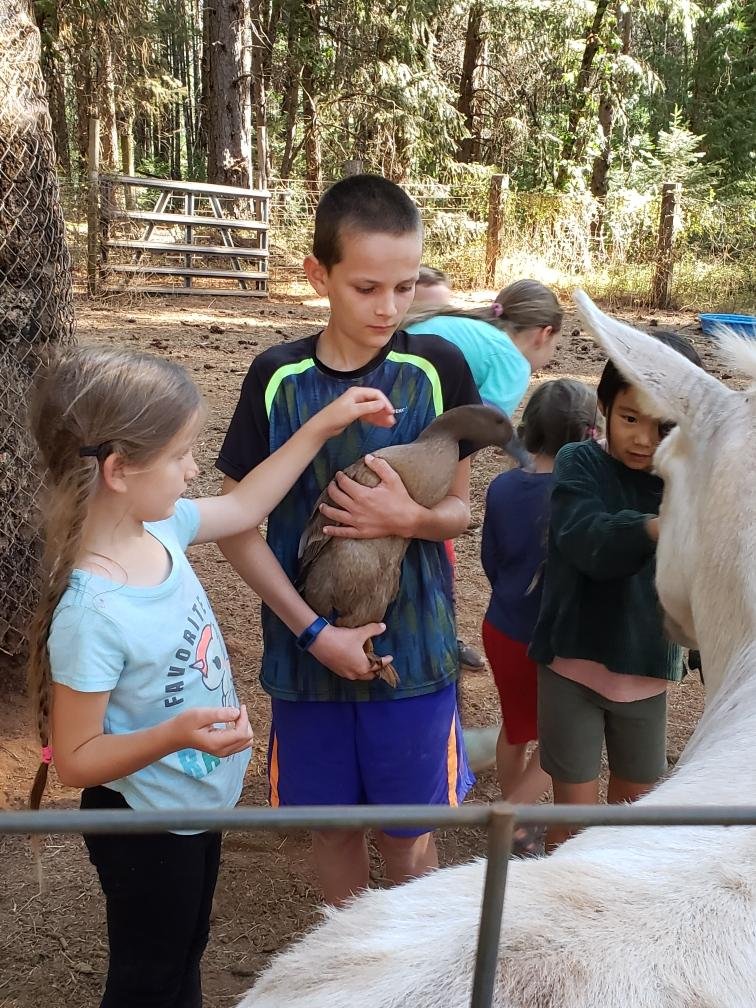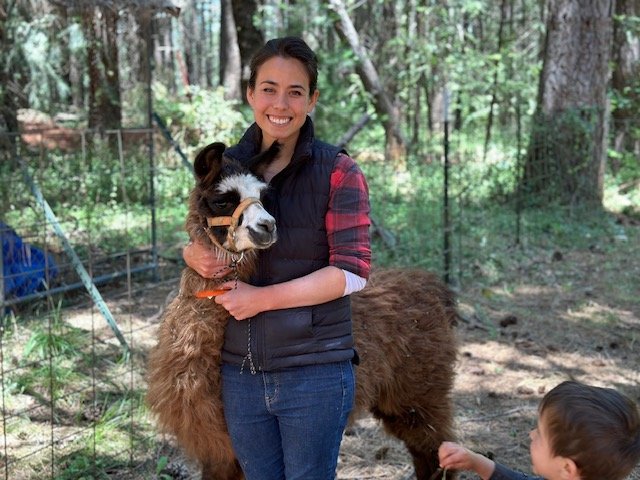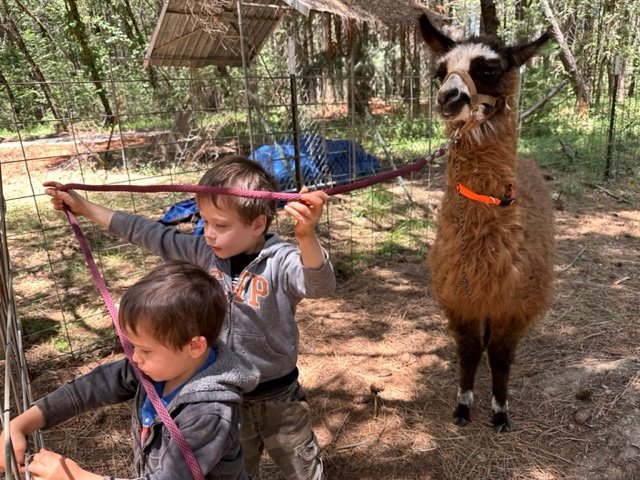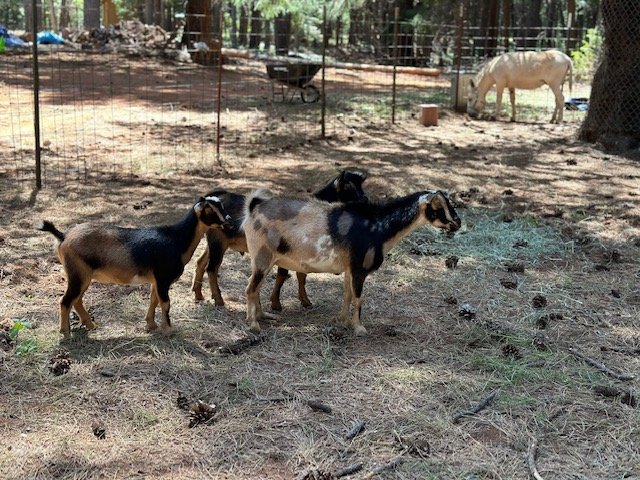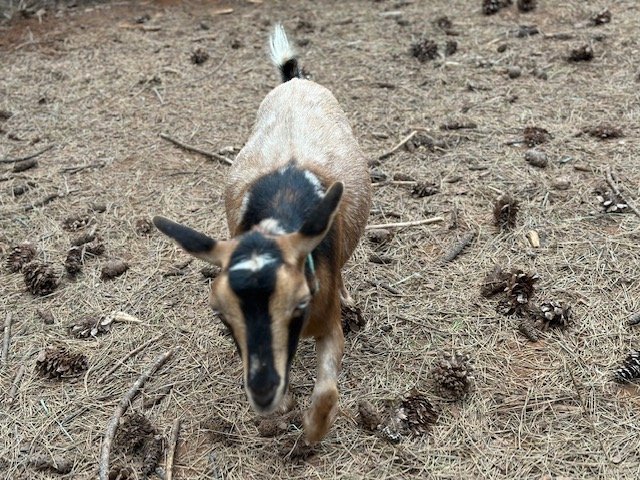"Now we're a real farm..."
Note of Apology: This summer has been filled with so much activity that I haven’t had time to write blog entries. Part of the “fullness” of the summer has been that the Jones family has been trying to move and get settled into a permanent housing setup (approx. 6 min from Iona House). So it feels like every waking moment has been devoted to either Iona House or our own house. We are now moved (mostly) and by the end of August will be able to put full attention to Iona House.
Much of the excitement of this summer has been the addition of many four footed friends (and a few 2 footed friends) to the family of Iona House. In addition to the horse we already had, so far we have added (with the generous help of sponsors who have donated toward these):
1 mini-mule (Festus - see previous post)
7 Nigerian Dwarf goats
1 Llama
and just last week we added two ducks to the family. This was when my oldest son (Nathan) informed me that “now we’re a real farm”. I didn’t know that ducks were the key to being a real farm. But apparently so.
The animals all serve a purpose… will, maybe not the ducks. We’re not sure.
The goats are for the purpose of eating poison oak (which they view as a tasty treat). They are also for milk production (more on this below).
The mini-mule protects the goat(s) that are in milk that stay back in the fenced paddock. Mules protect goats from coyotes, stray dogs, and potentially even from mountain lions. Everyone loves Festus. He’s sweet natured and can’t get enough pets from people.
The llama protects the herd of goats who are out eating poison oak (who are fenced in by movable electric fence). The llama has quickly become a crowd favorite. She is very personable and curious. Llama’s don’t typically like to be pet, but ours is patient with people touching her. She is about 1 year old and will get to be quite a bit bigger over the coming year. And no, she doesn’t spit - at least not at people.
The ducks… we’re not sure of their purpose (they came as a gift from someone). They do eat bugs and grubs and stuff like that. And the pair we have might be a mating pair. That might mean baby ducks and egg production. We’ll see. Currently they just love hanging out in their kiddie pool pond and waddling around. They are free range creatures and are cute to watch (when they’re not biting Festus).
The one goat that we have that is currently in milk is a good producer and extremely sweet natured. Her name is Willow. She’s like a dog. Wants to follow you around and hang out. She produces about a quart of milk a day. So far we’ve enjoyed goat milk, goat cheese, goat milk latte’s, and goat milk yogurt - all of which are delicious. The milk is very good tasting and quite creamy. We would also like to produce soap with the goats milk. SO. MANY. POSSIBILITIES.
By the way, I should be honest and say that the “we” is not usually me. I’ve only milked her like 3 times. It’s others who are doing this. I haven’t the faintest idea how to make cheese or yogurt or soap. It’s been Mary Shang-Lou (of our resident host family for the summer) who has been a rockstar at making great stuff with the goats milk. Go team Iona House!
People who come to Iona House love to interact with the animals. It’s a beautiful reminder of our creatureliness. The Bible was written in an agrarian setting and it’s wonderful how it comes to life in new ways just from spending a few hours or days in this kind of context. We easily forget that both the story of our creation (Gen. 1-2) and the story of the incarnation (Jesus’ birth) occur in the context of animals. Also, when Jesus went out into the wilderness for His 40 day fasting / testing, the Gospel of Mark tells us that He was amongst the wild animals. There are of course many, many examples of how animals are a big part of the story of Christian faith. These are just a few.
We look forward to you meeting the newest members of our Iona House family: fellow creatures under the care of our Creator.

